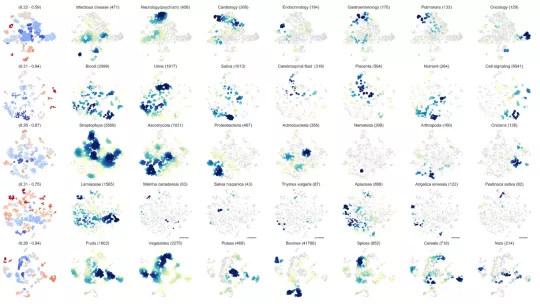Images
A tool developed by the Structural Bioinformatics and Network Biology lab at IRB Barcelona predicts the biological activity of chemical compounds, key information to evaluate their therapeutic potential.
Using artificial neural networks, scientists have inferred experimental data for a million compounds and have developed a package of programs to make estimates for any type of molecule.
The work has been published in the journal Nature Communications.
The Structural Bioinformatics and Network Biology laboratory, led by ICREA Researcher Dr. Patrick Aloy, has completed the bioactivity information for a million molecules using deep machine-learning computational models. It has also disclosed a tool to predict the biological activity of any molecule, even when no experimental data are available.
This new methodology is based on the Chemical Checker, the largest database of bioactivity profiles for pseudo pharmaceuticals to date, developed by the same laboratory and published in 2020. The Chemical Checker collects information from 25 spaces of bioactivity for each molecule. These spaces are linked to the chemical structure of the molecule, the targets with which it interacts or the changes it induces at the clinical or cellular level. However, this highly detailed information about the mechanism of action is incomplete for most molecules, implying that for a particular one there may be information for one or two spaces of bioactivity but not for all 25.
With this new development, researchers integrate all the experimental information available with deep machine learning methods, so that all the activity profiles, from chemistry to clinical level, for all molecules can be completed.
"The new tool also allows us to forecast the bioactivity spaces of new molecules, and this is crucial in the drug discovery process as we can select the most suitable candidates and discard those that, for one reason or another, would not work," explains Dr. Aloy.
The software library is freely accessible to the scientific community at bioactivitysignatures.org and it will be regularly updated by the researchers as more biological activity data become available. With each update of experimental data in the Chemical Checker, artificial neural networks will also be revised to refine the estimates.
Predictions and reliability
The bioactivity data predicted by the model have a greater or lesser degree of reliability depending on various factors, including the volume of experimental data available and the characteristics of the molecule.
In addition to predicting aspects of activity at the biological level, the system developed by Dr. Aloy’s team provides a measure of the degree of reliability of the prediction for each molecule. "All models are wrong, but some are useful! A measure of confidence allows us to better interpret the results and highlight which spaces of bioactivity of a molecule are accurate and in which ones an error rate can be contemplated," explains Dr. Martino Bertoni, first author of the work.
Testing the system with the IRB Barcelona compound library
To validate the tool, the researchers have searched the library of compounds at IRB Barcelona for those that could be good drug candidates to modulate the activity of a cancer-related transcription factor (SNAIL1), whose activity is almost impossible to modulate due to the direct binding of drugs (it is considered an 'undruggable' target). Of a first set of 17,000 compounds, deep machine learning models predicted characteristics (in their dynamics, interaction with target cells and proteins, etc.) for 131 that fit the target.
The ability of these compounds to degrade SNAIL1 has been confirmed experimentally and it has been observed that, for a high percentage, this degradation capacity is consistent with what the models had predicted, thus validating the system.
This work has been possible thanks to the funding from the Government of Catalonia, the Spanish Ministry of Science and Innovation, the European Research Council, the European Commission, the State Research Agency and the ERDF.
Related article:
Bioactivity descriptors for uncharacterized chemical compounds
Martino Bertoni, Miquel Duran-Frigola, Pau Badia-i-Mompel, Eduardo Pauls, Modesto Orozco-Ruiz, Oriol Guitart-Pla, Víctor Alcalde, Víctor M. Diaz, Antoni Berenguer-Llergo, Isabelle Brun-Heath, Núria Villegas, Antonio García de Herreros & Patrick Aloy
Nature Communications (2021) DOI: 10.1038/s41467-021-24150-4
About IRB Barcelona
The Institute for Research in Biomedicine (IRB Barcelona) pursues a society free of disease. To this end, it conducts multidisciplinary research of excellence to cure cancer and other diseases linked to ageing. It establishes technology transfer agreements with the pharmaceutical industry and major hospitals to bring research results closer to society, and organises a range of science outreach activities to engage the public in an open dialogue. IRB Barcelona is an international centre that hosts 400 researchers and more than 30 nationalities. Recognised as a Severo Ochoa Centre of Excellence since 2011, IRB Barcelona is a CERCA centre and member of the Barcelona Institute of Science and Technology (BIST).














